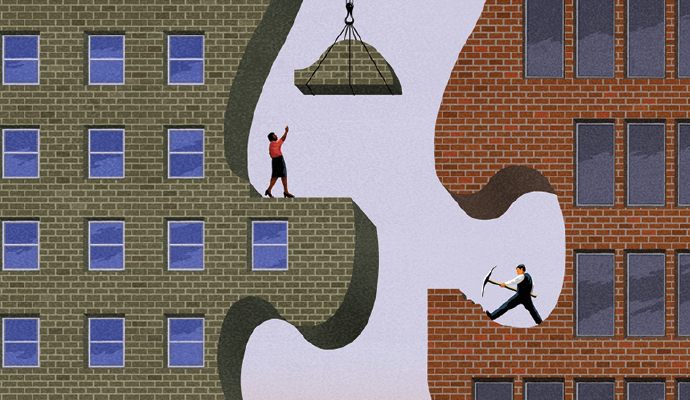Is the End Looming for Razor-and-Blades Pricing?
Companies might want to rethink the storied model of charging less up front to get more down the line — especially as e-commerce offers consumers ever greater flexibility, information, and selection.
Bottom Line: Companies might want to rethink the storied model of charging less up front to get more down the line — especially as e-commerce offers consumers ever greater flexibility, information, and selection.
Way back in 1900, the Eastman Kodak Company rolled out its Brownie camera and brought the snapshot to the mainstream, along with the slogan “You press the button, we do the rest.” The initial model cost only $1.00, but Kodak executives reasoned (correctly) that once the camera caught on, they would make their real money by selling film rolls specifically designed to fit the Brownie. Four years later, Gillette introduced the first mass-market safety razor using the same business model: Get customers hooked on a low-priced, durable item (the razor), then earn high profit margins by selling more expensive proprietary and complementary products (blades).
More than a century later, the so-called razor-and-blades pricing model that Gillette made famous persists. Think of printers and cartridges, consoles and video games, mobile phones and rate plans, and media platforms and subscription services. You might not pay much for the basic hardware, but you’ll shell out plenty for the adds-ons, upgrades, replacement parts, and supplementary products that make the product worthwhile.
According to the author of a new study based on a survey of the recent research and media reports on issues surrounding razor-and-blades pricing, however, the approach might be out of date.
During the launch of the 2015 iPhone, Apple made waves with a new program that would allow customers to upgrade every year without being tied to a specific carrier’s rate plan. Around the same time, Verizon Wireless, Sprint, and T-Mobile also abandoned their requirements that customers sign up for restrictive contracts.
The trend spread far beyond the telecommunications industry. In August 2015, Epson introduced a printer with a higher initial cost but promised a more sophisticated mechanism that would require users to replace ink less often — and they could replace it at a far lower cost. Even companies in the shaving industry got into the act. In 2014, Gillette adjusted its prices to counteract the increasing popularity of online razor brands, which sought to undercut the traditional model by offering blades on cheaper subscription plans.
Therein lies a lesson, according to the study’s author: The razor-and-blades model succeeded because the consumer of the past had a tendency to buy only trusted and durable products, expressed uncertainty about the benefits of competing brands, and worked on a tight budget. But the Internet has upended that. The savvy online shopper — aided by search engines, social media, and detailed customer reviews — can seek out bargains and lower-priced niche products and has access to a far wider range of brands than could ever have fit on a shelf in the past. As the author writes: “If the razor-and-blades marketer could, to borrow from an old adage, ‘fool some of the people some of the time’ before, the Internet makes it difficult to do so today.”
Online shoppers — aided by search engines, social media, and customer reviews — can seek out bargains and lower-priced niche products.
And it’s a tough business model to sustain in the modern economy. Not only do firms have to adhere to cut-rate pricing on their initial hardware offerings, but they also have to make sure customers are locked in to the exclusive use of their package via contractual obligations, emotional appeals that build brand loyalty, or functional designs that deter people from trying out competitors. Given the wide-ranging options on the Internet and the global market, it’s increasingly difficult to implement and enforce those kinds of lock-in protocols.
Besides, upgrades come fast and furious these days, and the evolution of high-tech products and services has become a business in and of itself. Indeed, the very knowledge that a better core product might be right around the corner, and that the current version could be obsolete within six months, may be enough to induce consumers to reject the traditional, locked-in razor-and-blades pricing structure. In addition, many third-party companies, easily searchable on the Internet, have sprung up to offer non-brand replacement, refill, or supplemental parts and services. It’s something of a double-edged sword for the razor-and-blades approach: Although the business model increasingly relies on partners in emerging economies to produce cheap equipment, those suppliers might not be the most respectful of intellectual property rights, the study points out.
To lean away from the razor-and-blades approach and embrace alternative pricing mechanisms, firms should explore charging more for the initial purchase but spreading payment installments over a longer period of time, similar to a leasing arrangement or a monthly mobile phone package, the author suggests. In the era of transparency, companies shouldn’t have to make up for essentially offering their initial hardware on a subsidy only to charge more for its continued use. And cutting down on the need for replacement parts also helps firms’ environmental reputation, offering another reason to ditch the old model, the study notes.
But the author proposes that the real key is offering a suite of products and services that provide recognizable value to customers, throughout the front- and back-end process. If every phone, razor, and media platform is becoming indistinguishable from every other, perhaps firms need to engage with consumers in a different way, and offer services, upgrades, and marketing outreach efforts that achieve true customer loyalty, beyond what a fixed contract or proprietary lock-in could ever do.
Source: “Razor-and-Blades Pricing Revisited,” by Anirudh Dhebar (Babson College), Business Horizons, June 2016, vol. 59, no. 3



